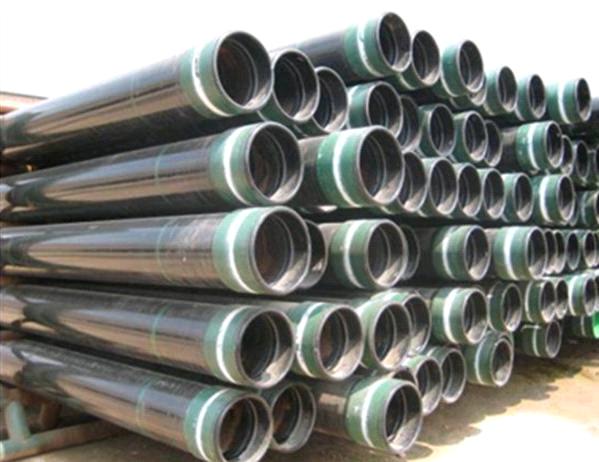
Casings are a series of steel pipes that are fed into drilled wells to stabilize the well, prevent contaminants and water from entering the oil flow, and prevent oil from seeping into groundwater. The casing is installed in layers, the diameter is reduced in sections, and connected together to form casing string. These five kinds of casing strings are conductor casing, surface casing, intermediate casing, casing liner and production casing.
Casing is usually made of carbon steel, but as the main structural component of oil well, the grade of steel used to make casing and the specification of finished material are very important.
Most countries design, manufacture, test and transport oil and gas casings for hydraulic fracturing wells in accordance with API standards. According to the American Petroleum Institute's hydraulic fracturing operation well construction and integrity guidelines, the casing must meet the strict requirements of compression, tension, collapse and burst resistance, quality and consistency. Well casing should be able to withstand hydraulic fracturing pressure, production pressure and corrosion conditions. The casing used or repaired shall meet the same API performance requirements as the new casing.
Once the casing is in place, the tubing goes into the casing to transport oil or gas. Casing and tubing are manufactured according to a certain diameter and wall thickness. The petrowiki website of the society of Petroleum Engineers describes the tubing manufacturing process
API specifies seamless or electric welding process for pipe manufacturing. Seamless pipe is a kind of forged steel pipe without weld. It is made of hot worked steel or, if necessary, by subsequent cold working of the hot worked product to produce the required shape, size and properties. Due to the nature of fabrication, the cross section of the tube wall area may be slightly eccentric, and the tube may be slightly elliptical and not completely straight.
The welded pipe has a longitudinal weld, which is formed by resistance welding or inductive welding without adding filler metal. The edges to be welded are mechanically pressed together, and the heat of welding is generated by the resistance of the current flow. Welds of electric welded pipes shall be heat treated after welding to a minimum temperature of 1000 ° F, or treated to ensure that there is no untempered martensite.
Spiral and longitudinal welded pipes used in oil transportation are produced by hot working, by rolling steel into thin strips or plates. Hot rolling occurs at a very high temperature, higher than the recrystallization temperature of the material, producing malleable steel that can form various shapes. Cold formed steel is made by rolling forming. Rolling forming is a metal forming process in which a piece of metal is rolled by a pair of rollers to reduce thickness, improve strength and improve surface finish.
The on-line metal thickness gauge of hot strip mill and cold strip mill provides accurate and real-time measurement to ensure that the finished product meets the accurate specifications of its working environment. X-ray thickness gauge is the best thickness measurement technology, which can provide the speed and accuracy required for operating hot or cold rolling mill. X-ray based sensor systems provide very accurate high speed / low noise measurements, allowing manufacturers to achieve material savings and quality improvements.
>> OCTG COMPANIES safety shoes OEM
More ask >>
What are the types of casing?
What is difference between casing and tubing?
What is a casing?
What is casing point in oil and gas?


 Guqin instrument for sale
Guqin instrument for sale